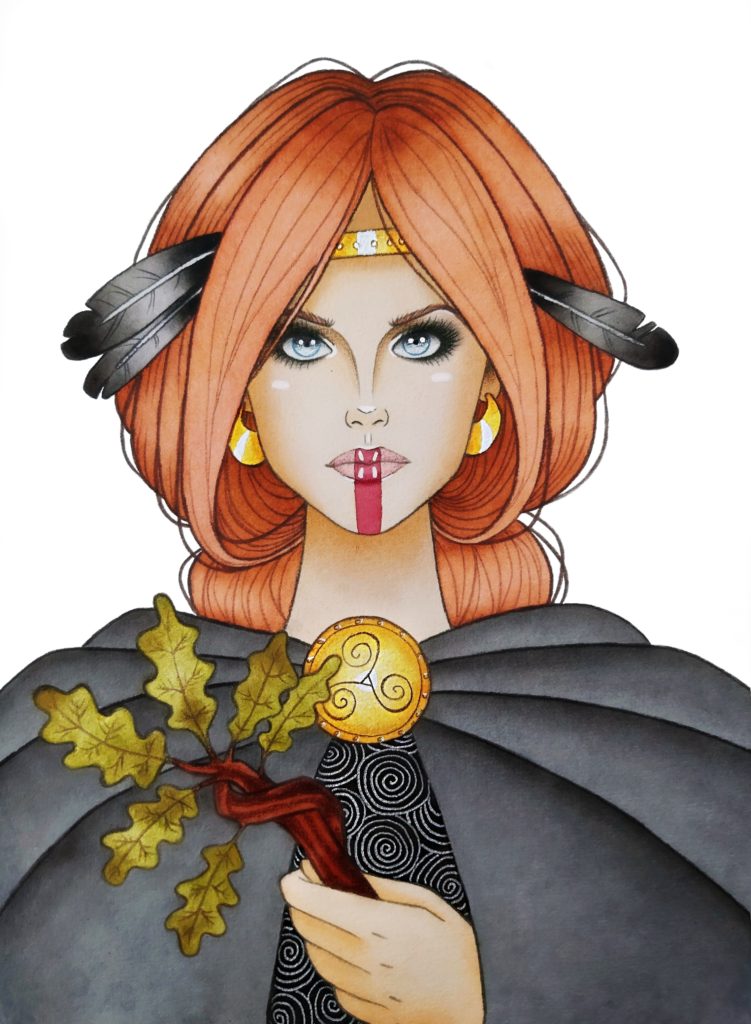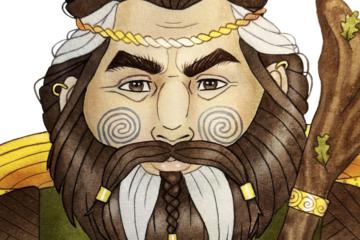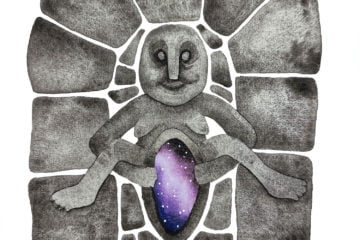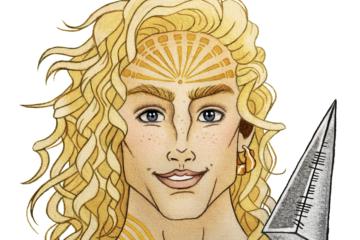
One of the fiercest goddesses of Irish mythology was the beautiful Macha. A member of the Tuatha Dé Danann in possession of powerful magic (and a wicked taste for revenge), Macha was a sovereignty goddess associated with the land, battle, kingship, horses, crows and fertility.
She is a complex figure, who appears throughout Irish mythology as five different women named Macha. She is also commonly thought to be an aspect of the Morrigan, particularly by those who consider the Morrigan a triple goddess.
She is strongly connected to the province of Ulster, and her dwelling was thought to have been the ancient fort of Emain Macha. Her parentage is hard to pin down as there are so many convoluted versions of her throughout the mythology.
The five guises of Macha go as follows;
1. The Daughter of Partholón
Macha is mentioned in the Leabhar Gabhála as the daughter of Partholón. According to the Leabhar Gabhála, the Partholonians were the second wave of settlers to arrive in Ireland. They were descendants of Noah, but they succumbed to plague.
Macha is only mentioned briefly in this tale, and it is most likely that her inclusion here by the monks was in an attempt to Christianise her.
2. The Wife of Nemed
Macha’s next appearance is as the wife of Nemed, of the third wave of settlers in Ireland. In this tale she dies while clearing the land for agriculture.
This type of creation story is typical of the goddesses of Ireland and marks her strongly as a goddess of the land and fertility. Her burial place was called Ard Mhacha (which translates to Macha’s Height) and it is known today simply as Armagh.
3. Member of the Tuatha Dé Danann
Macha next appears as a member of the Tuatha Dé Dannan. Her mother is Ernmas and her father is Delbeath. Here we see her with her sisters, Badb and The Morrigan.
It is in these tales that we see Macha as a goddess of battle and war. She fights alongside her sisters in the First and Second Battles of Moytura, using magic to send rain, fog, blood and fire showering down upon their enemies.
She is said to have fallen alongside King Nuada at the hands of Balor of the Baleful Eye during the Second Battle of Moytura.
4. Wife of Cruinniuc
We next see Macha as a fairy woman in the Ulster Cycle of Irish mythology. In this tale she is married to Cruinniuc, a wealthy Ulster farmer, and she becomes pregnant with twins.
Cruinniuc goes to a festival organised by the King of Ulster, where the King brags about the speed of his horses. Despite Macha telling him not to mention her to anyone, Cruinniuc claims that his wife could outrun any of the King’s horses. Enraged, the King commands Cruinniuc to bring her immediately to race.
Macha is in labour and begs for the race to be delayed, but she is forced to race anyway at the behest of the King. Macha wins the race, and collapses at the finish line to give birth to her twins. In her agony she curses the men of Ulster to endure nine days of labour pain at their time of greatest need, for nine generations. After giving birth to her twins she dies.
5. Macha Mhongruadh (Macha of the Red Hair)
In this tale, we see Macha as the daughter of King Aodh Ruadh, who rotates the rule of Ireland between himself and two other Kings. They each take it in turn to rule, seven years at a time. King Aodh dies after his third round of ruling, and when his turn comes again Macha steps in to claim it.
The other two Kings, Díthorba and Cimbáeth, do not want to co-rule with a woman. A battle ensues and Macha beats them to claim the throne for herself, killing Díthorba.
At the end of her seven years of ruling, Macha’s claim is challenged by the five sons of Díthorba, but she declares that she will only give them battle for the sovereignty. They accept her challenge and the battle begins, but once again Macha is the victor. Díthorba’s sons flee into the wilderness, and Macha marries Cimbáeth so that they can share the kingship.
Macha pursues Díthorba’s sons by herself. She disguises herself as a leper and heads out to the wilderness to find them. One by one she locates them, then seduces and captures them as prisoners to bring home, where she forces them to build the fort of Emain Macha.
Macha goes on to rule with Cimbáeth for seven years until he dies. She then rules for fourteen years by herself, until she is slain by Rechtaid Rígderg. Macha is listed as the 76th ruler of Ireland, and is thought to have rules around the 4th or 5th century BC.
In Conclusion
Macha was a powerful goddess, who’s many appearances repeatedly show her as a force to be reckoned with. She knew what she wanted, and dealt with those who wished to hurt her decisively. Though her legends are varied, there is no doubt that she is among the most important, inspiring and fascinating figures in Irish mythology.


